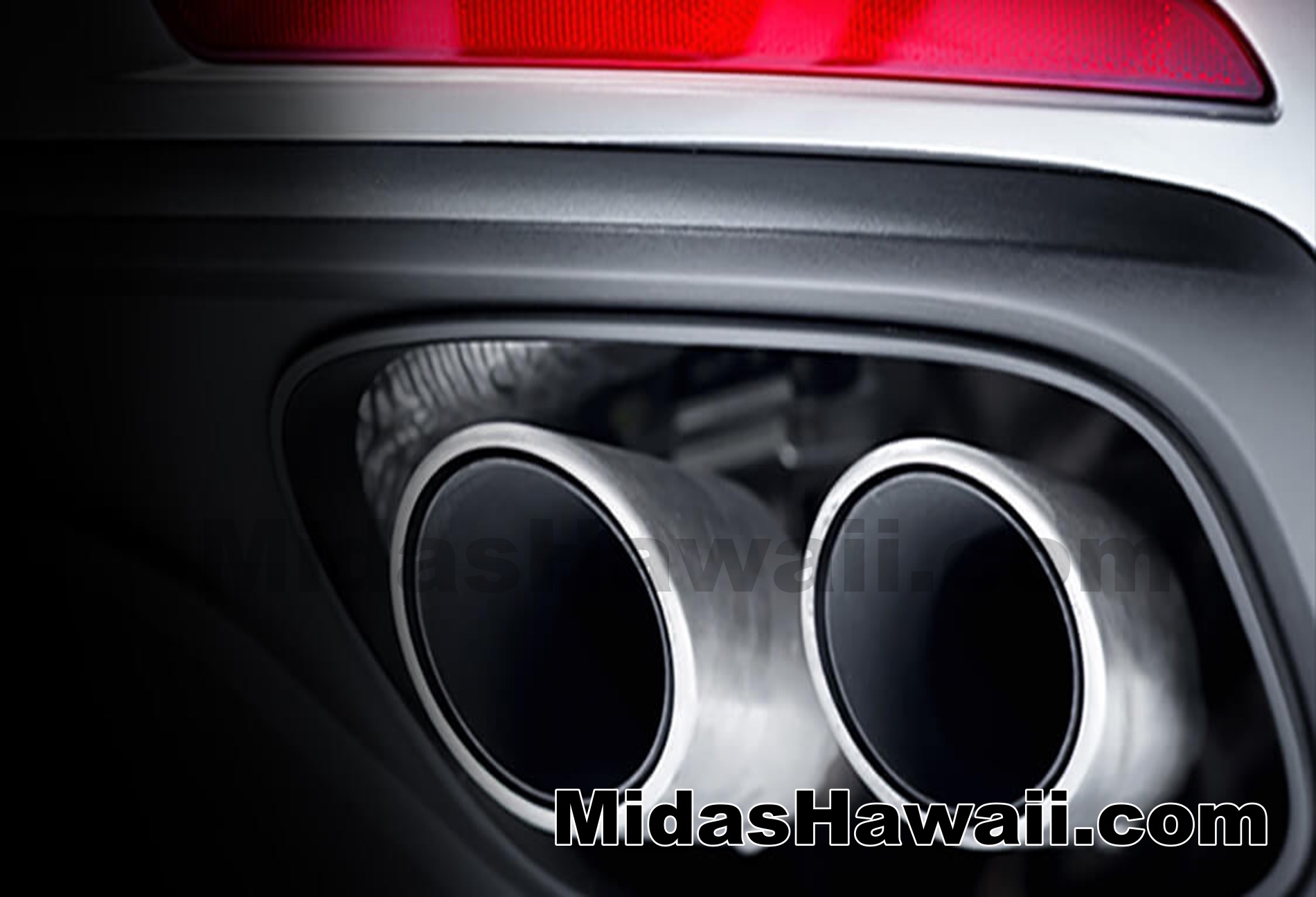Dual Exhaust
- Tweet
Back to the top
FAQ LEGEND
Back to the top
Dual Exhaust Questions
A. A dual exhaust system distributes a vehicle's engine exhaust between two separate exit routes, usually ending in two separate mufflers. A single exhaust system sends all exhaust gasses through one exhaust path and muffler. If your engine has multiple cylinder banks (typical with six or more cylinders) and you have single exhaust, a "Y" pipe connects both cylinder manifolds to a shared exhaust pipe. From there, exhaust passes through one oxygen sensor, catalytic converter, and muffler. In a dual exhaust system, two exhaust pipes (usually connected to each other in an "X" or "H" pipe configuration) distribute the exhaust between two different sensors: the catalytic converter and muffler arrays. (Single mufflers with two intakes are also available.) With dual exhaust, your engine expels exhaust gas faster (using less energy) than with single exhaust. Most small-engine, non-turbo passenger vehicles come with single exhaust. Dual exhaust comes on certain vehicles featuring engines with six or more cylinders.
A. Either single or dual exhaust may be better, depending on the vehicle and whether you're interested in the performance benefits and classic muscle car engine sound that dual exhaust can deliver.
Dual exhaust is better for:
- Engine sounds: The "hot rod" sounds of dual exhaust are a matter of taste (and hotly debated among car enthusiasts). Depending on exhaust pipe configuration, dual exhaust can deliver a deep, throaty sound or a higher-pitched, exotic-car sound.
- Performance and fuel efficiency: The performance and fuel efficiency benefits of dual exhaust come from opening more pipe space for exhaust to pass through (lowering the backpressure), and doubling the vehicle's oxygen sensor, catalytic converter, and muffler capacity. The faster an engine can "exhale," the faster it can "inhale" fresh fuel. And the less energy your engine devotes to exhaling, the more energy it can devote to its main job of moving your vehicle.
Single exhaust is better for:
- Lower service costs: With just one exhaust pipe, oxygen sensor, catalytic converter, and muffler to maintain, single exhaust has a lower cost of ownership than dual exhaust.
- Vehicles that wouldn't see performance benefits from dual exhaust: The performance gains of dual exhaust will only be noticeable in high performance or large-capacity engines. That's why single exhaust comes standard on most vehicles with non-turbo, four-cylinder engines.
A. Aftermarket dual exhaust upgrade kits are available for certain vehicles. Check with your nearest Midas to find out whether if dual exhaust upgrade service is available in your location. Our technicians can offer objective advice on the upgrade options for your vehicle.
A. With a good muffler installed, a dual exhaust system should not make your engine sound significantly louder than it would with single exhaust. But it almost certainly affects the sound quality of your engine. Car enthusiasts relish the classic engine sound of a dual exhaust vehicle (and endlessly compare the specific tone colors of various system configurations). Here are some ways dual exhaust (and the rest of the exhaust system) can enhance your vehicle's engine sound.
- Pipe length and diameter: Like the pipes on an organ, the longer and wider the exhaust pipe is, the louder and deeper sound can be produced as exhaust gasses move through it.
- Piping configuration: "Generally, the X-pipe will deliver a more high-pitched exhaust note, making a car sound more exotic, whereas an H-pipe gives a deeper tone with more of a traditional hot rod sound," says George Rumore of the muffler manufacturer Stainless Works1.
- Muffler selection and modifications: The muffler affects engine sound more than any other part. Sound quality can be customized with muffler design and aftermarket muffler tips. Excessive sound can also be muffled further with sound dampening sprays and wraps.
Interested in changing your engine sound? Find your local Midas. We know exhaust systems and (of course) mufflers. Come talk to us about your options.
- George Rumore of the muffler manufacturer Stainless Works was quoted in an April 25, 2015 article on SuperChevy.com Read the article.‚Ü©
A. Seeing two (or more) tail pipes on a vehicle does not mean that the engine is equipped with true dual exhaust. You may be seeing a "twin tips" style exhaust tip -- an aftermarket muffler accessory some drivers install to improve the look and sound of their vehicle. A true dual exhaust system has two oxygen sensors, two catalytic converters, and two mufflers (or one muffler with two intakes). Exhaust tips do not offer the engine performance benefits of true dual exhaust, since they have no effect on exhaust system workload and resources.
ref no:34697
Please send questions about this website to webmaster
Terms of Use / Legal Disclaimer / Privacy Statement
Site Designed and Managed by MacBusiness Consulting

